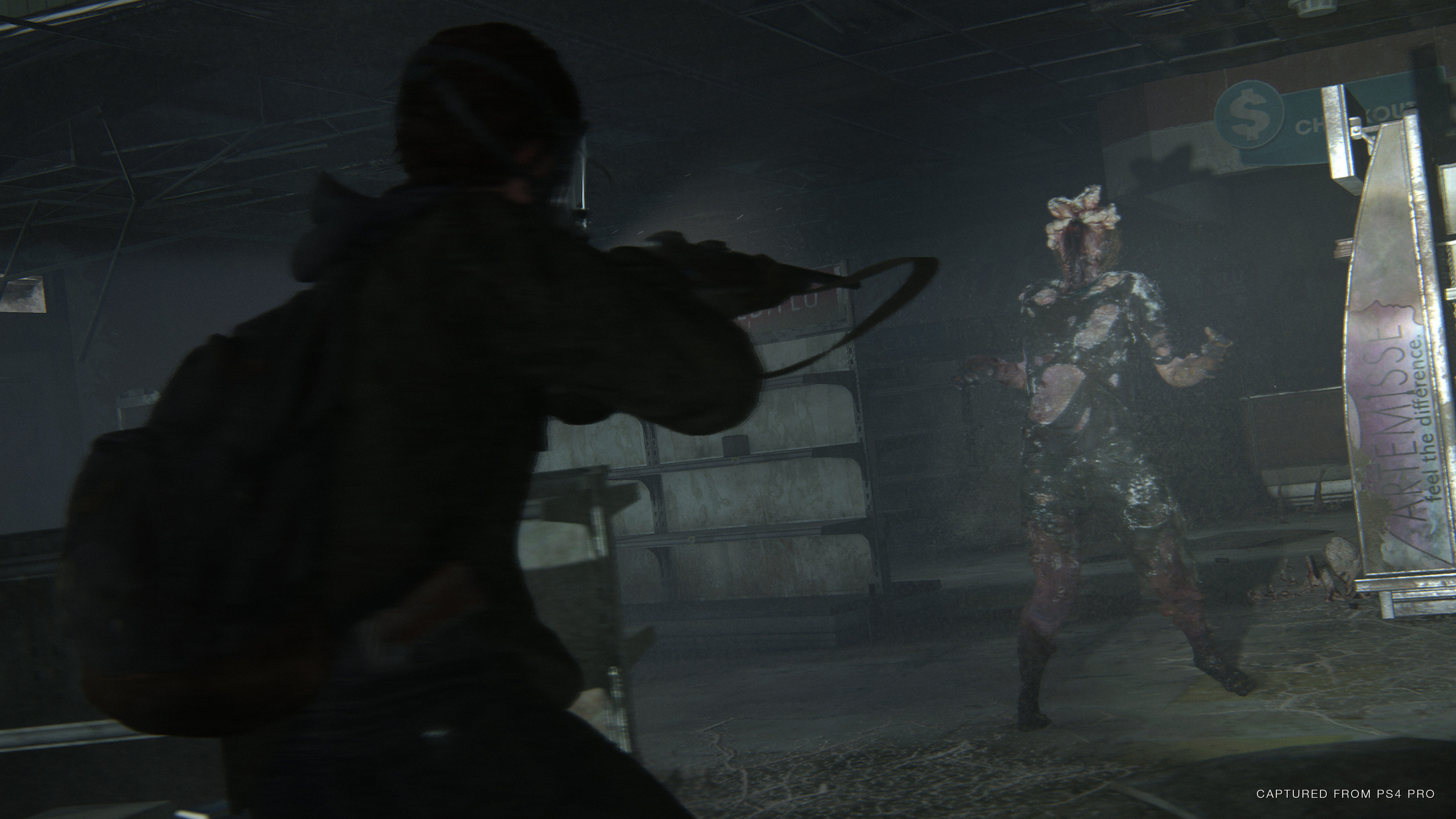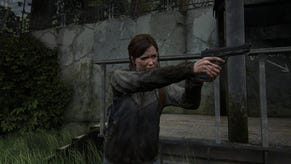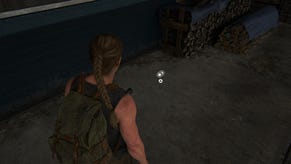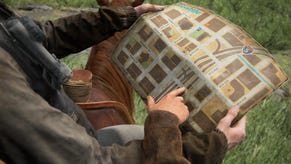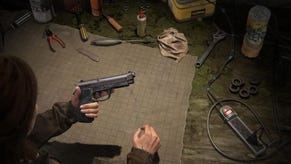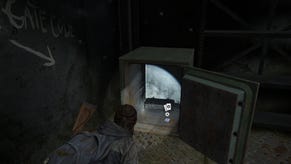The Last of Us: Part 2 hands-on - virtual murder never felt so bad
If you have ever lost your temper as a moody teen, you’re probably familiar with the instant regret that follows that momentary loss of control. The bowling ball in the pit of your stomach. The shame. The fist-shaped hole in your bedroom wall, or shards of glass from a broken mirror.
Video games don’t often attempt to evoke unpleasant emotions outside of fear, and even then it’s mostly surface fear - jump scares over psychological ones. Most video game characters are free to lose their temper, to inflict violence on another person, without any consequences or emotion attached or alluded to. Clear the level. Move on to the next wave of nameless NPCs.
In The Last of Us: Part 2, I shot an arrow through a man’s head. His name was Sean. I know this because I stayed nearby, prone in the long grass, watching as his dog whimpered and cried over his corpse, pawing at his immobile form. Then another enemy came around the corner, saw the body, and called out his name in anguish - “Sean!”
“The Last of Us, I think at its core, is a franchise about examining human nature,” co-game director Anthony Newman tells me during our interview. “And with a backdrop of this post-pandemic world, it really serves as a pressure that puts aspects of human nature into sharper and sharper relief. The first game being about the bond between a parent and their child, and the world kind of pushes that bond as far as it goes. In this game, it’s about how far would you go, how much of your humanity would you lose, in trying to seek vengeance or seek justice against those who have wronged you?”
Naughty Dog has created a harrowing vision of our future, where humanity has banded into disparate and desperate groups, each only interested in protecting its own. It wants to shock you. It wants you to wince at the violence on display in the pre-launch trailers. If you shoot a person in the face in The Last of Us: Part 2, a new gore system sees a part of your target’s head or face removed. Sometimes entire heads turn into mush. Sometimes a bullet might take off a jaw. Violence feels like punctuation, a sudden finality, life snuffed out quickly and disgustingly. It’s scrappy and panicked and the people you kill are convincing in their humanity. Naughty Dog doesn’t just want to make you feel sad in cutscenes, it wants you to feel regret and relief as violence inevitably rears its head, revealing a bloodied jaw hanging from a bone hinge.
“I think the game is kind of a conversation about the cycle of violence, and I think as you play through the game, it becomes clear that the pursuit of vengeance has tremendous cost, not only against the people you’re exacting vengeance on, but on the player themselves,” Newman explains. “And I think one of the really interesting ways we’re playing with that is with our named NPCs. All of the human enemies in the game have names, and they’ll refer to each other by name when they’re co-ordinating, like when one is telling one to flank, or to search a building, and they’ll also react in anguish and call out each other’s names when they see one of their friends die.
“I think that’s like, beyond just our great AI and voice acting and animations, that’s one whole new level of dimension of humanity that we’re able to give these human enemies. I think that makes it clear that these aren’t just faceless goons that you’re fighting against, these are real people who care about each other, and you are committing these heinous acts against them. I think that through the gameplay, this is what’s so awesome about video games as a medium, this is something you couldn’t do in film or in any other way. You are complicit in these horrible acts, and it really drives home what this high cost of humanity is.”
The naming system assigns each NPC a name as they spawn, when they’re born, rather than allowing them to choose random names when they call out to each other. This way, if you happen to die after killing Sean, for example, Sean will still be Sean when you load up a checkpoint and try again.
“Originally we were experimenting with systems where they would be dynamically named as you played, but what we realised is that if you die, and then you respawned, then if the guy in the hat was Lee before and he’s Stephen now, that’s not great,” Newman tells me. “There’s a lot of really interesting things under the hood, but it’s an extraordinary technical accomplishment to have these named NPCs. When we first came up with the idea, we thought it was this ridiculous pipe dream, but we decided to take it on and they figured out a way to make it work.”
Of course, you can choose to avoid confrontation entirely for the most part, so long as you’re not spotted. Naughty Dog has expanded your stealth options for this sequel. You’re still only entirely invisible if there’s a solid piece of cover between you and an enemy, but you can make yourself less visible when crossing open ground by going prone and crawling on Ellie’s belly. Different lengths of grass help to obscure you more, but you can still be spotted up close. The introduction of sniffer dogs encourages you to stay on the move as they pick up your scent trail. You’re forced to throw bricks and bottles as distractions to draw dogs away, or you can slip into a room and close the door behind you. Dogs will scratch at doors to tell enemies that you’re inside. The level design is much more open, so you can slip through cracks to quickly move between buildings and rooms, or hop out of windows to throw off a trail.
“So one thing I’m really excited about, and I think leads to some really cool situations, is that previously enemies had two levels of knowledge,” Newman explains of the AI advances. “Either they knew where you were, or they didn’t. But now there’s this new middle ground called ‘vague knowledge’, where, for example, if an enemy sees their friend get killed with an arrow or another silenced weapon, like if you use the new crafted silencer to take someone out, and they see that happen, they have a general idea of where it came from but they don’t know exactly where you are. So you’ll hear enemies say like, ‘I think it came from over there!’ So they even vocalise that they’re not entirely sure, but they’re generally pretty sure that you’re around that area.”
You can use this to your advantage, setting up a visible kill with an arrow, placing down a makeshift mine, and repositioning to watch the fireworks when the enemy heads to the search zone. Because of this combination of improved AI, more open level design, and the addition of that prone button, both combat and stealth feel more involved. During the demo, I come across a garage full of infected. A letter I find beforehand mentioned this place - a survivor had poisoned some people and trapped them in. They’ve been locked inside for years, scratching at the walls. Before opening the door, I set up a couple of mines along my escape route. I open the door and run my gauntlet, hearing the infected explode into grisly chunks behind me. It will probably play out completely differently for you. It did for Newman.
“What I love about that encounter is Ellie’s bolt-action rifle is strong enough to shoot through multiple enemies at once,” Newman says. “So when I opened that door, and I didn’t have a mine on me, and I was like, ‘Okay, I have this game knowledge, I’m going to try to line up this shot so I can hit two enemies at once.’ And it’s kind of a rare thing, but what I did is that I was lining up a shot, and I shot through an enemy, and the angle of the shot was such that I shot through one guy, it killed them. The second runner, I hit his leg off, and the runner collapsed to the ground. We have this new system where Infected can start crawling towards you when they lose their legs, and so this one guy goes down, and then the second guy is still crawling towards me, grabbing at my leg, and I stomped him out. It was kind of a cool confluence moment of different systems.
“I think almost every single aspect of the game, visually and technologically, we’ve taken to some new level. And yeah, with the gore system, you’ll actually get sometimes partial headshots that will take off half but not all. I think it’s all in service of making the violence feel that much more real, and making you really feel like you’re in danger with Ellie.”
Things can spiral quickly in this world. In one encounter, I attempt to draw an enemy away by smashing a shop window with a brick. As I throw it, another enemy happens to walk past the window, my brick flies through, smashes the glass, and hits the passing enemy in the head, stunning him. I use this literal window of opportunity to sprint and vault through the gap, jamming my switchblade into his throat as he staggers around. Now the guy who was trailing me has seen me, his dog is running for me, and he’s calling for support from his friends. I take a bullet in the shoulder, which knocks me onto my back where I fire my revolver from prone, putting the dog out of action as it turns into the room. Injured, I manage to crawl away out of sight as the enemies methodically clear the buildings up the street, searching for me.
“The one thing that I haven’t talked about enough today is the addition of doors and windows in combat,” Newman says. “It sounds like such a minor thing, but these real-world things have these very interesting, unexpected effects on combat. For example, if a dog is trying to sniff you out, they’ll get to a door, and dogs can’t open doors, and they’ll be pawing at it, and hopefully a human is there to let them in. But if they’re not, dog just doesn’t know what to do and can’t get through there. I’ve also seen with windows, first just the idea of like, you need to make an escape and so you melee the window and jump out, that’s just a cool moment in and of itself. But like when a Shambler is chasing you out onto the street and does its explosion attack, and all the windows shatter and everything breaks, and the environment reacts, that’s an awesome moment.
“I’ve seen people with our contextual melee moves, slamming people onto low cover - the system doesn’t count the window as collision, so I’ve seen people get slammed through a window, the entire window shatters, and they’re doing the attack against the sill that’s remaining. So those little minor real-world elements I think have really cool immersion effects. That’s what we’re really focusing on, is building systems that can interact with each other in interesting ways.”
Like the first game, The Last of Us: Part 2 knows that action only really resonates when it’s earned, though, and there are plenty of moments of downtime between all the bloodletting. The first playable section takes place in Jackson, Wyoming, where Ellie has some semblance of a normal life. Chronologically, this is set after Ellie shares a kiss with Dina in the 2018 E3 trailer, and the sexual tension fizzes in the air like the static from a charged balloon. Ellie and Dina are on patrol, looking for traces of infected and clearing them out. While they search the snowy ghost town on horseback, they talk and bond. There’s a real chemistry between the characters. It’s the most convincingly performed and written blossoming romantic relationship I’ve ever seen in a game, culminating in the discovery of a secret weed lab filled with porn tapes and a gas mask bong. It could be The Last of Us: Part 2’s giraffe moment.
The Last of Us: Part 2 feels like a smart sequel where everything compliments everything else. All the improvements are in the right place, and every mechanical tweak and addition works to serve both story and action. I didn’t think it was possible to be more excited about the first half of 2020, but Naughty Dog’s sequel looks set to kick the year off in fire and fury when it releases on February 21.




